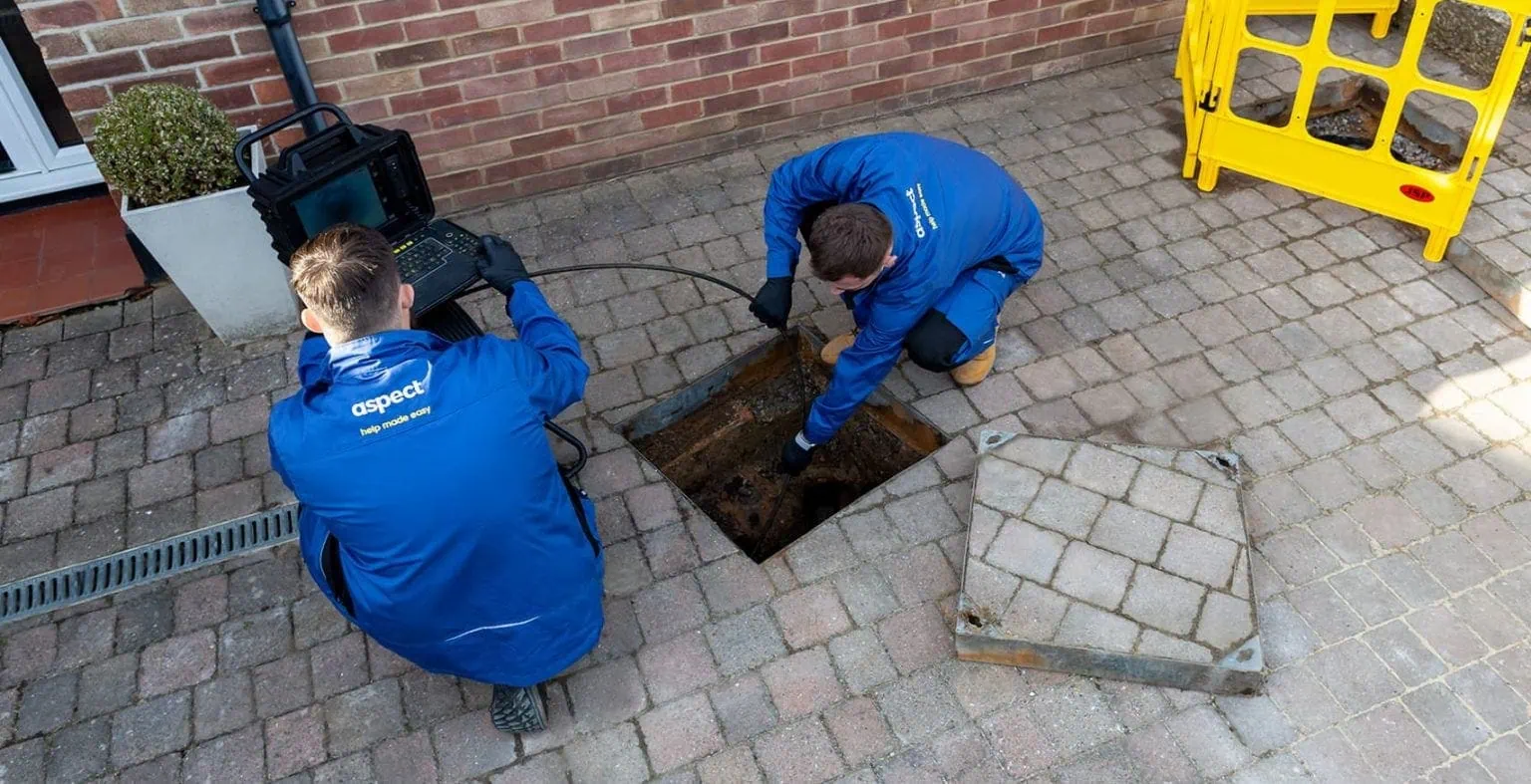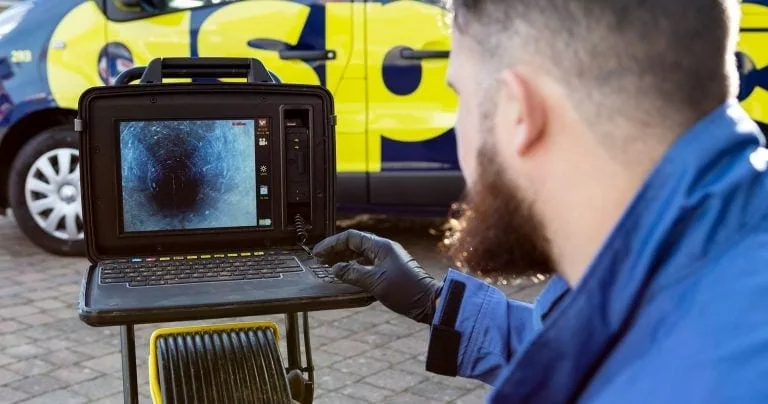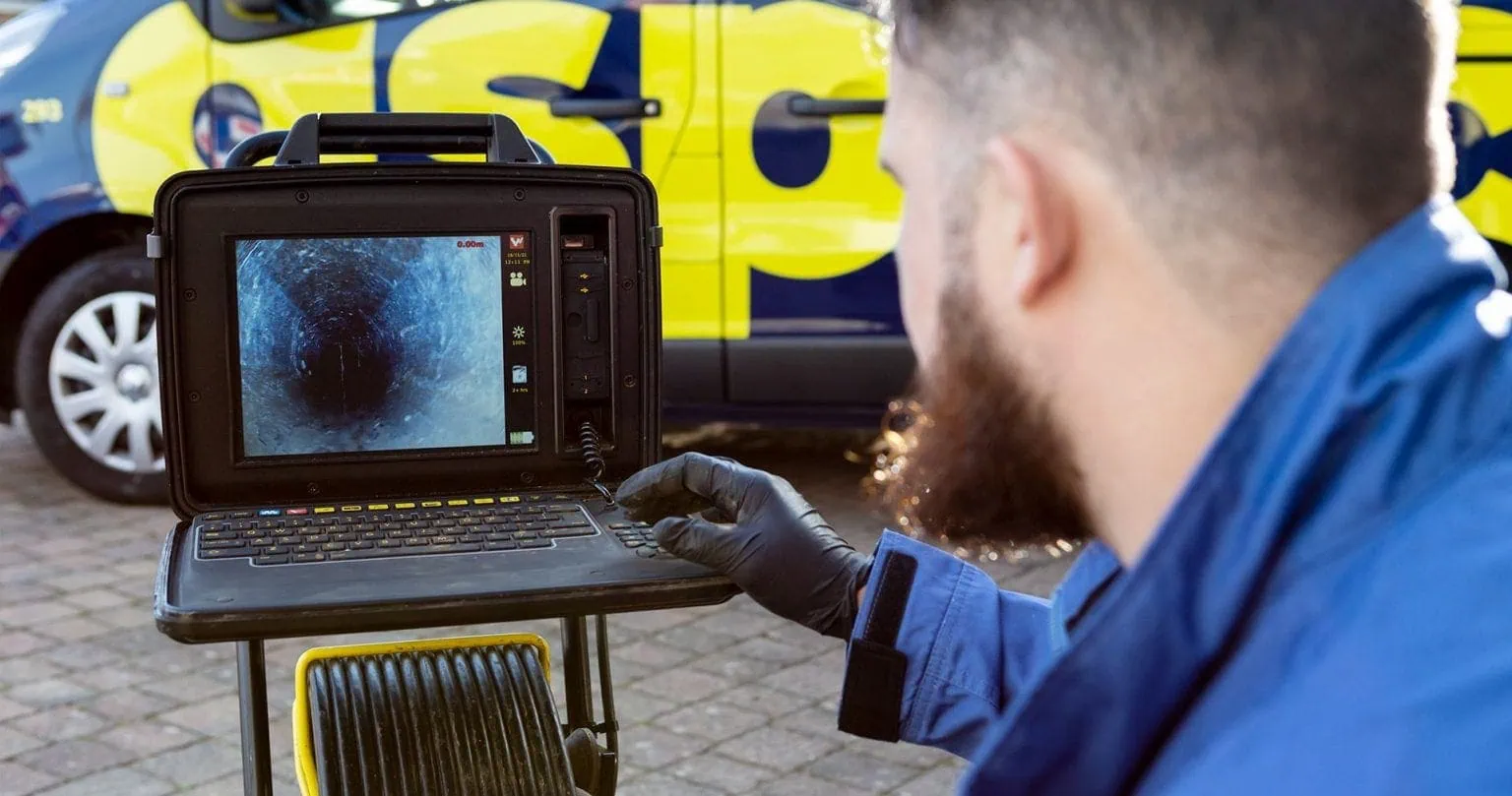Who is responsible for your drains?
Do you know who owns your drainage system? Most people have no idea. While most people think it’s up to the property owner to maintain the drains within their boundary, this isn’t always the case. To help you find out who is responsible for your drains, we’ve created this guide. You’ll find answers to some of the most frequently asked questions and learn how to gain detailed information about your own drainage system.

Do I pay for drain repair work if I own the property?
Most detached and semi-detached homes feature private drains that extend to the property’s boundary. These are soil and surface water drains, but the rule is the same for both: If there’s a drainage problem within this boundary, then the homeowner’s usually responsible for the maintenance and repairs.
Semi-detached and terraced homes sometimes feature shared drains. These carry waste from multiple properties into the sewers, and are owned by the wastewater company.
Legislation from October 2011 handed responsibility of maintaining and repairing shared drains over to the local authority. As a result, you won’t pay for repairing drains that are shared with a neighbour, even if they lie within your property’s boundary.
Own a flat or apartment? If so, you likely pay a yearly fee to a management company. They’ll use some of this money to resolve any blocked, damaged or collapsed drains. If the issue rests outside of the property boundary, then responsibility will fall on the wastewater company.

Learn more about your system with a drain survey
Our drainage engineers are on call to provide drain inspections and drain mapping.
- A detailed report shared the same day
- Suitable for buyers and vendors
- Fixed pricing from £225.00 + VAT
- Please use our feedback request form
- We’ll call you back in around 15 minutes
What is a lateral drain?
Lateral drains connect private drains to the public sewers, and usually run beneath the pavement or road just outside your property. They can sometimes be within your boundary and even serve multiple homes – in which case they’re shared. Shared or not, all lateral drains are the responsibility of the wastewater company.
Who pays for sewer repairs?
Sewers tend to run below public streets rather than private property. In turn, most homeowners don’t have to think about sewer repairs or maintenance. Private or ‘unadopted’ sewers are the exception.
If your drains connect to a private sewer within your property boundary, you’re probably responsible for the repair and maintenance of it. If you’re in a block of flats with a private sewer, all flat owners are jointly responsible.
You can ask the sewerage company to ‘adopt’ the sewer and take it on themselves, but they may refuse if they believe it’s not in their best interests. Should they deny your request, you can appeal to The Water Services Regulation Authority (OFWAT).
Once you’ve made a request to the water company, they’ll send an engineer to ensure the sewer’s design and build quality meets their standards. They’ll also charge you for any remedial work the sewer needs before they adopt it themselves.
Important! If you use a private sewer and don’t take care of it, the local health department can force you to pay for the maintenance and repairs. They could even do the work themselves and charge you afterwards.
Is the problem in my private drains or the public sewer?
If multiple sinks, basins and toilets in a property appear blocked or slow running, the problems likely come from an external blockage. You can check with a neighbour to see if they’re affected. If the issue is only with your property, then you’ll need a drainage specialist to investigate for a blockage in your external pipework. If the neighbour’s also affected, contact the wastewater company before there’s a flood.
Note: Your engineer likely won’t investigate a problem that involves lifting a public manhole, as these are the sole responsibility of the wastewater company.
Faults with publicly owned drains and sewer systems should be reported to the local wastewater company. An engineer will be sent to confirm the problem, including where the fault lies and who’s responsible for it. If they discover it’s your drainage system at fault, they’ll discuss the issue with you, and they may even provide a fixed-price quote.
How can I find out who’s responsible for the drains I use?
You may be able to find out who is responsible for your drains by checking the deed to your property. You could also try speaking with your wastewater company or your local authority to get access to a public sewer map.
To learn as much as possible about the drains on your property, we recommend a drain mapping survey. You’ll get a detailed map of the drain network along with the engineer’s notes, video feed and time-stamped images. It’s a great way to learn as much about the drains around your property as possible.
So, how does it work? An engineer places a camera attached to a flexible cable into the drains. They’ll use the information gathered during the CCTV survey to create a report outlining the condition of the drains, where they connect to the sewers, and if any sections are owned by the water company. It’ll also tell you if a problem exists inside or outside your property’s boundary.
The report will highlight any maintenance needs, so you can deal with issues like cracks or holes before they get worse. This could help avoid tree root ingress, which may happen if water escapes into the surrounding soil.

Are tenants responsible for maintaining drains?
Thanks to the Landlord and Tenant Act 1985, renters don’t usually have to worry about repairing drains. Instead, it’s the landlord who must resolve blocked or damaged drains, though many tenancy agreements have stipulations. These may include comments about tenant misuse and who is responsible for your drains under certain conditions.
In most cases, tenants who allow fat, grease, sanitary products and other foreign objects into the drainage system will be charged by the landlord to have them cleared.
Blocked drains can lead to wastewater flooding in extreme cases, so tenants should inform their landlords at the first sign of a blockage. Doing so maximises the chance it’ll be sorted quickly and reduces the chance of wastewater flooding.
Tip: Problem with your private drains? You may be able to claim for it. Most insurance providers won’t pay for misuse (e.g. foreign objects in the system) or wear-and-tear, but they do sometimes pay remedial drain repairs when there’s accidental damage and tree root ingress. So, it could be worth claiming if you maintain your drains and dispose of all waste properly.
Could I have to pay for repairs to a public drain?
A leak on your property can result in subsidence or the creation of a sinkhole. If this damages a shared drainage system or public sewer, the wastewater company could make a claim against you. This also applies if a problem with your private drains affects those that are publicly owned.
It’s always best to get any issues investigated as soon as possible. The longer a problem goes unresolved, the worse the damage and the more costly the repairs will be.
Was this article helpful?
Think we could improve this article? Please let us know